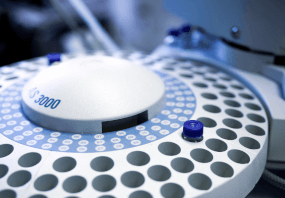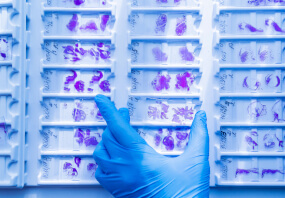General description
Lectins are carbohydrate-binding proteins, omnipresent, found in fungi, plants and animals. The structure of lectin is diversely studied in plants and animals. The secondary structure of this protein is rich in β-strands and possesses a carbohydrate binding sites on the surface.
Application
Lectin from Arachis hypogaea (peanut) has been used:
- to determine the acrosomal status (presence or absence of acrosomal matrix corresponding to intact or acrosome-reacted spermatozoa) on viable sperm cells
- to probe cryosections of mediastinal lymph nodes (mLNs) with fluorochrome-labeled PNA and anti-B220 to detect germinal centers (GCs)
- to visualize the cone outer segments of pre-treated retinal sections
Biochem/physiol Actions
Lectin is known to be useful in glycoconjugate characterizing, imaging and targeting. Its use in a microarray assay, enable efficient glycome profiling. This is because of its specific interaction with oligosaccharides, glycoproteins and glycolipids. In plants and fungi, lectin defends against pathogens/feeders. Lectin participates in host recognition and tissue adhesion, thereby aids in the pathogenesis of microorganism.
PNA does not agglutinate normal human erythrocytes, but strongly agglutinates neuraminidase treated erythrocytes. PNA has potent anti-T activity similar to the anti-T antibody in human sera. The lectin can be used to distinguish between human lymphocyte subsets.
Physical form
Contains phosphate buffer salts and NaCl
- UPC:
- 12352202
- Condition:
- New
- Availability:
- 3-5 Days
- Weight:
- 1.00 Ounces
- HazmatClass:
- No
- MPN:
- L7381-5MG












